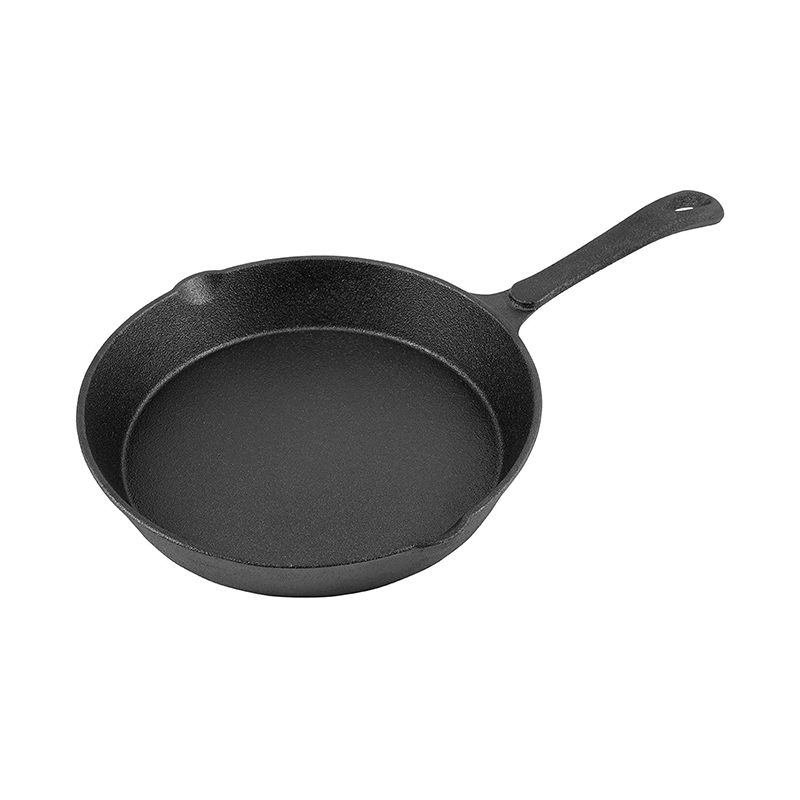A cast-iron frying pan with a lid is more than a simple tool for frying. Its ability to move from the stovetop directly into the oven makes it a versatile piece of cookware that adapts to diverse cooking needs.

Unlocking the Versatility: Beyond Basic Frying
The addition of a lid transforms a simple skillet into a multi-purpose kitchen workhorse, expanding its capabilities far beyond traditional frying.
Stovetop to Oven: Seamless Heat Transition
This cookware’s ability to move from stovetop to oven creates opportunities for layered cooking techniques. You can start a dish by searing a cut of meat on the stovetop to lock in juices and develop rich flavor, then transfer the entire pan to the oven for even, gentle cooking. This method works well for dishes that benefit from both high-heat browning and slow, consistent oven finishing, allowing ingredients to cook through without drying out.
The Lid’s Role: Mastering Moist Heat Cooking
A well-fitted lid traps steam and heat, turning the pan into a compact braising or simmering vessel. When closed, it creates a self-contained environment where moisture condenses on the lid’s underside and drips back onto the food—an effect that keeps proteins tender and vegetables vibrant. This makes it suitable for simmering hearty sauces, braising tough cuts of meat until they fall apart, and even steaming delicate vegetables, all without needing to transfer ingredients to different pots.
Key Considerations for Selection
Choosing the right cast-iron pan with a lid involves balancing practical needs with cooking preferences. Several aspects deserve attention to ensure your selection enhances your kitchen experience.
Size and Weight: Matching Your Cooking Needs
Pans come in various diameters to suit different household sizes and recipes. Smaller pans are easy to handle for everyday meals like eggs or single-serve stir-fries, while larger options accommodate cooking for groups or preparing family-sized casseroles. The material’s inherent weight contributes to its heat retention—helping maintain consistent temperatures during cooking, but it’s also a factor to consider for storage and maneuvering, especially if you frequently move the pan between stovetop and oven.
Material and Finish: Seasoned vs. Enameled
Two primary finishes dominate the market: seasoned and enameled cast iron. Seasoned cast iron develops a natural non-stick surface, called a patina, through repeated use and care. This patina improves over time, with each cooking session adding a thin layer of oil that polymerizes and creates a smooth, slick surface. Enameled cast iron features a glass-like coating that resists rust and doesn’t require the same maintenance as seasoned versions. It also comes in a range of colors, adding a decorative touch to the kitchen, and can handle acidic ingredients without reacting.
Lid Design: Function Meets Preference
Lids are typically made of either cast iron or tempered glass. Cast iron lids offer a tighter seal, which is ideal for retaining moisture during long braises, and some feature self-basting ridges on the underside to distribute condensation more evenly. Glass lids, meanwhile, let you monitor cooking progress without lifting the lid and releasing heat or steam, convenient for dishes where you want to check doneness without disrupting the cooking process. Most glass lids are safe for oven use up to moderate temperatures, adding flexibility.
Handles and Pouring Spouts: Practical Design Details
Ergonomic handles enhance usability. Look for main handles that feel secure and comfortable to grip, even when wearing oven mitts, and helper handles on larger pans to make lifting easier. Some designs include small pouring spouts on the rim, which simplify draining excess liquids like broth from braises or grease from cooked meats without spilling.
Matchino Your Cooking Style
If you enjoy the ritual of caring for cookware and watching the patina develop over time, a seasoned cast-iron pan may feel rewarding. It responds well to frequent use and becomes more non-stick with each meal. An enameled version, on the other hand, suits those who prefer a low-maintenance approach, as it can handle a wide range of ingredients—including acidic ones like tomatoes or vinegar—without special care. The right pan will feel like a natural extension of your kitchen, adapting to your routines and making cooking more enjoyable.



